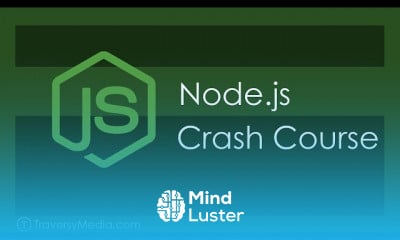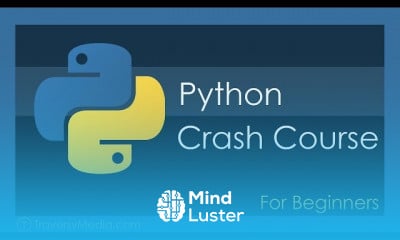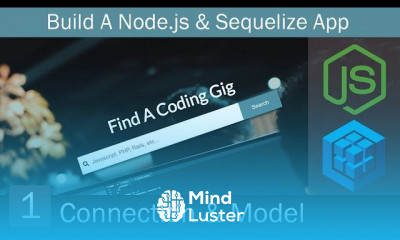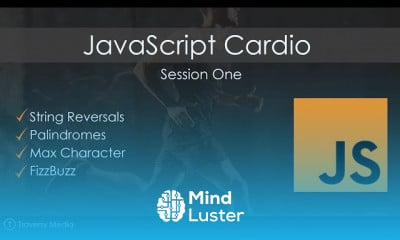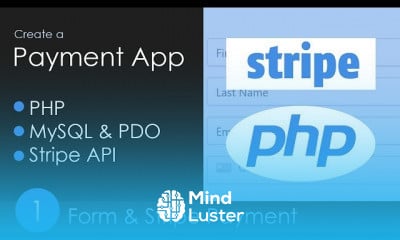Immutable JS Redux Tutorial 2 React js Tutorial
Share your inquiries now with community members
Click Here
Sign up Now
Lessons List | 7
Lesson
Comments
Related Courses in Programming
Course Description
We will build a small game during this tutorial. You might be tempted to skip it because you’re not building games — but give it a chance. The techniques you’ll learn in the tutorial are fundamental to building any React app, and mastering it will give you a deep understanding of React.
Tip
This tutorial is designed for people who prefer to learn by doing. If you prefer learning concepts from the ground up, check out our step-by-step guide. You might find this tutorial and the guide complementary to each other.
The tutorial is divided into several sections:
Setup for the Tutorial will give you a starting point to follow the tutorial.
Overview will teach you the fundamentals of React: components, props, and state.
Completing the Game will teach you the most common techniques in React development.
Adding Time Travel will give you a deeper insight into the unique strengths of React.
You don’t have to complete all of the sections at once to get the value out of this tutorial. Try to get as far as you can — even if it’s one or two sections.
What Are We Building?
In this tutorial, we’ll show how to build an interactive tic-tac-toe game with React.
You can see what we’ll be building here: Final Result. If the code doesn’t make sense to you, or if you are unfamiliar with the code’s syntax, don’t worry! The goal of this tutorial is to help you understand React and its syntax.
We recommend that you check out the tic-tac-toe game before continuing with the tutorial. One of the features that you’ll notice is that there is a numbered list to the right of the game’s board. This list gives you a history of all of the moves that have occurred in the game, and it is updated as the game progresses.
You can close the tic-tac-toe game once you’re familiar with it. We’ll be starting from a simpler template in this tutorial. Our next step is to set you up so that you can start building the game.
Prerequisites
We’ll assume that you have some familiarity with HTML and JavaScript, but you should be able to follow along even if you’re coming from a different programming language. We’ll also assume that you’re familiar with programming concepts like functions, objects, arrays, and to a lesser extent, classes.
If you need to review JavaScript, we recommend reading this guide. Note that we’re also using some features from ES6 — a recent version of JavaScript. In this tutorial, we’re using arrow functions, classes, let, and const statements. You can use the Babel REPL to check what ES6 code compiles to.
Setup for the Tutorial
There are two ways to complete this tutorial: you can either write the code in your browser, or you can set up a local development environment on your computer.
Setup Option 1: Write Code in the Browser
This is the quickest way to get started!
First, open this Starter Code in a new tab. The new tab should display an empty tic-tac-toe game board and React code. We will be editing the React code in this tutorial.
You can now skip the second setup option, and go to the Overview section to get an overview of React.
Setup Option 2: Local Development Environment
This is completely optional and not required for this tutorial!
Optional: Instructions for following along locally using your preferred text editor
Help, I’m Stuck!
If you get stuck, check out the community support resources. In particular, Reactiflux Chat is a great way to get help quickly. If you don’t receive an answer, or if you remain stuck, please file an issue, and we’ll help you out.
Overview
Now that you’re set up, let’s get an overview of React!
What Is React?
React is a declarative, efficient, and flexible JavaScript library for building user interfaces. It lets you compose complex UIs from small and isolated pieces of code called “components”.
React has a few different kinds of components, but we’ll start with React.Component subclasses:
We’ll get to the funny XML-like tags soon. We use components to tell React what we want to see on the screen. When our data changes, React will efficiently update and re-render our components.
Here, ShoppingList is a React component class, or React component type. A component takes in parameters, called props (short for “properties”), and returns a hierarchy of views to display via the render method.
The render method returns a description of what you want to see on the screen. React takes the description and displays the result. In particular, render returns a React element, which is a lightweight description of what to render. Most React developers use a special syntax called “JSX” which makes these structures easier to write. The <div /> syntax is transformed at build time to React.createElement('div'). The example above is equivalent to:
Trends
Graphic design tools for beginners
Web Design for Beginners
Graphic Design Basics
Graphic Design | Photoshop
Accounting
Advanced Logo design methods
Customizing type for logos
Web Design 101 Free Full Course
UX design career in 2025
Figma for UX UI design
Web Design Using HTML CSS
Logo Design
Financial Accounting
Make money as a freelance designer
Best zoology books
Biology
Accounting Finance course
Figma Signing Up and Signing In
Web design basics
Logistics and Supply Chain Management
Recent
Bioinformatics basics
Bioinformatics databases
Vitamin A to Z tablets
Best zoology books
Best cream for piles pain
Laser surgery for piles
Best cream for piles
Anal fissure treatment
Best antibiotics for diseases
Antibodies structure
Macrophage structure
Drosophila genetics
Diagnostic tests
Bioinformatics
Genetics
Gene therapy
Kidney structure
DNA replication and types
Bacterial cell structure
Parasite structure




